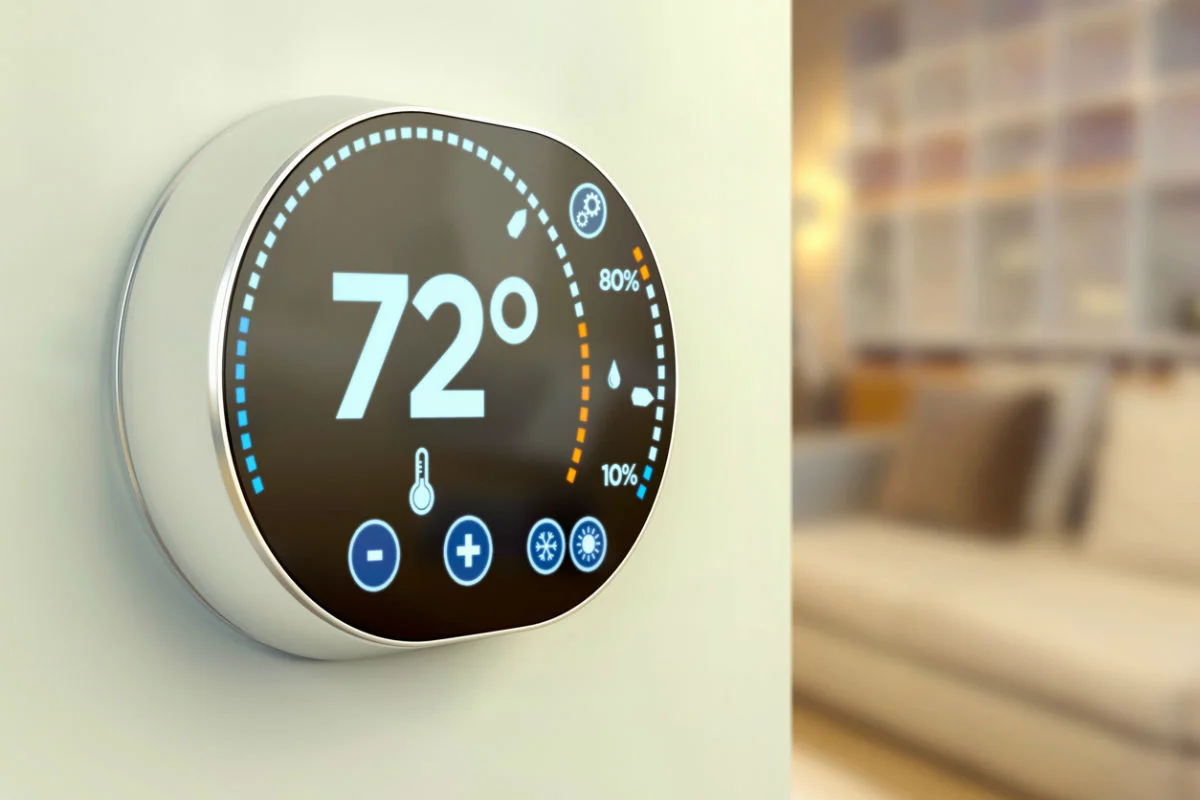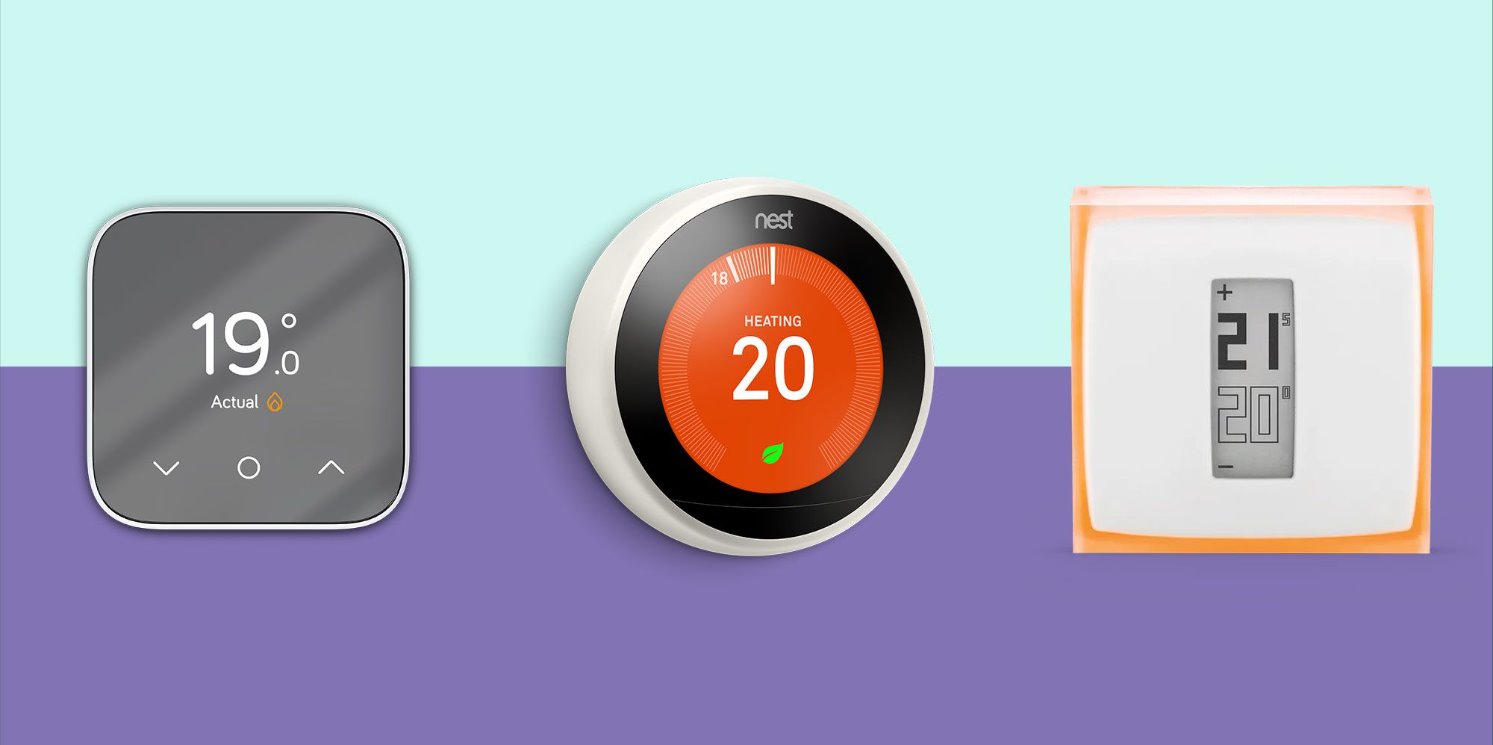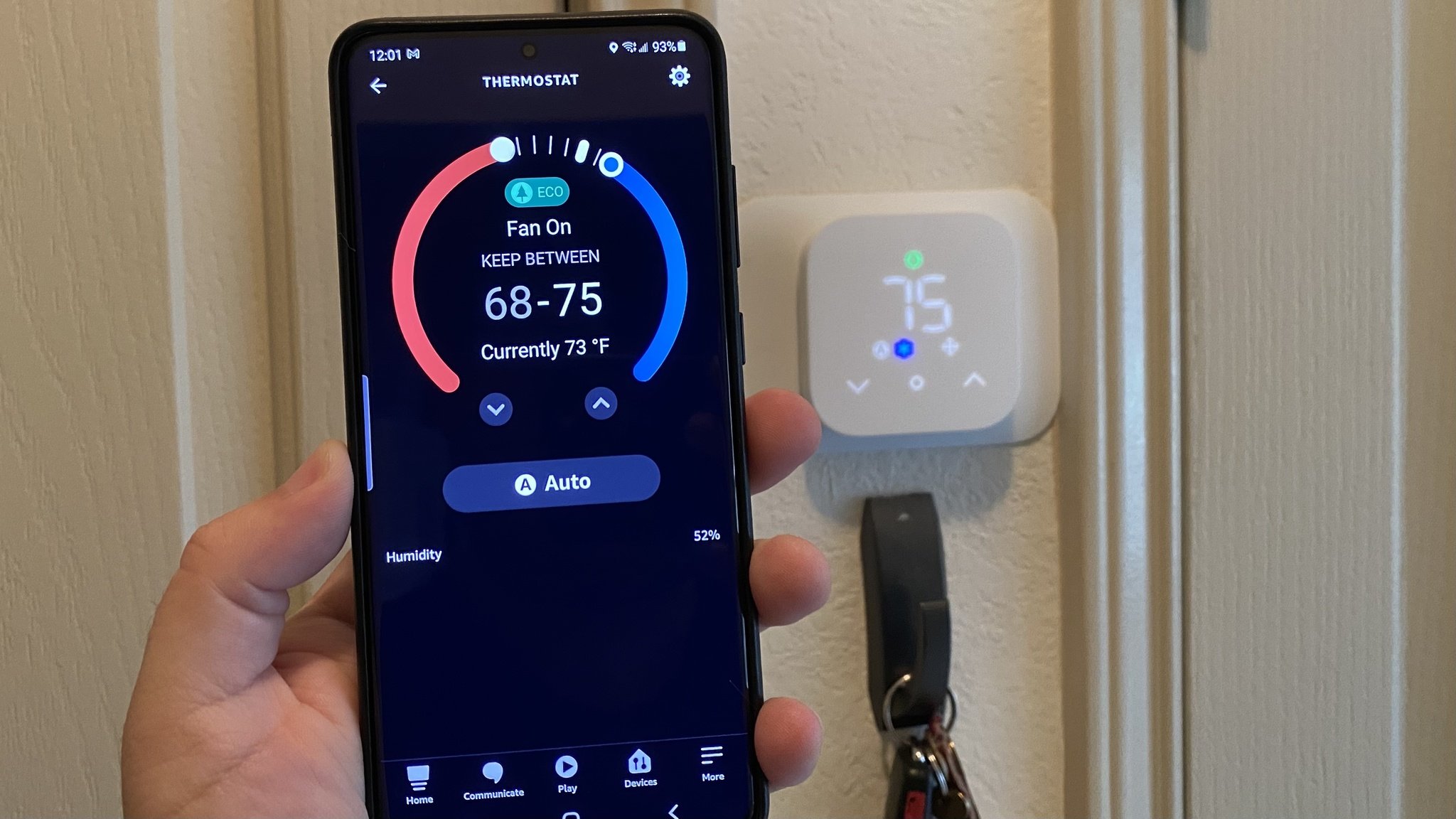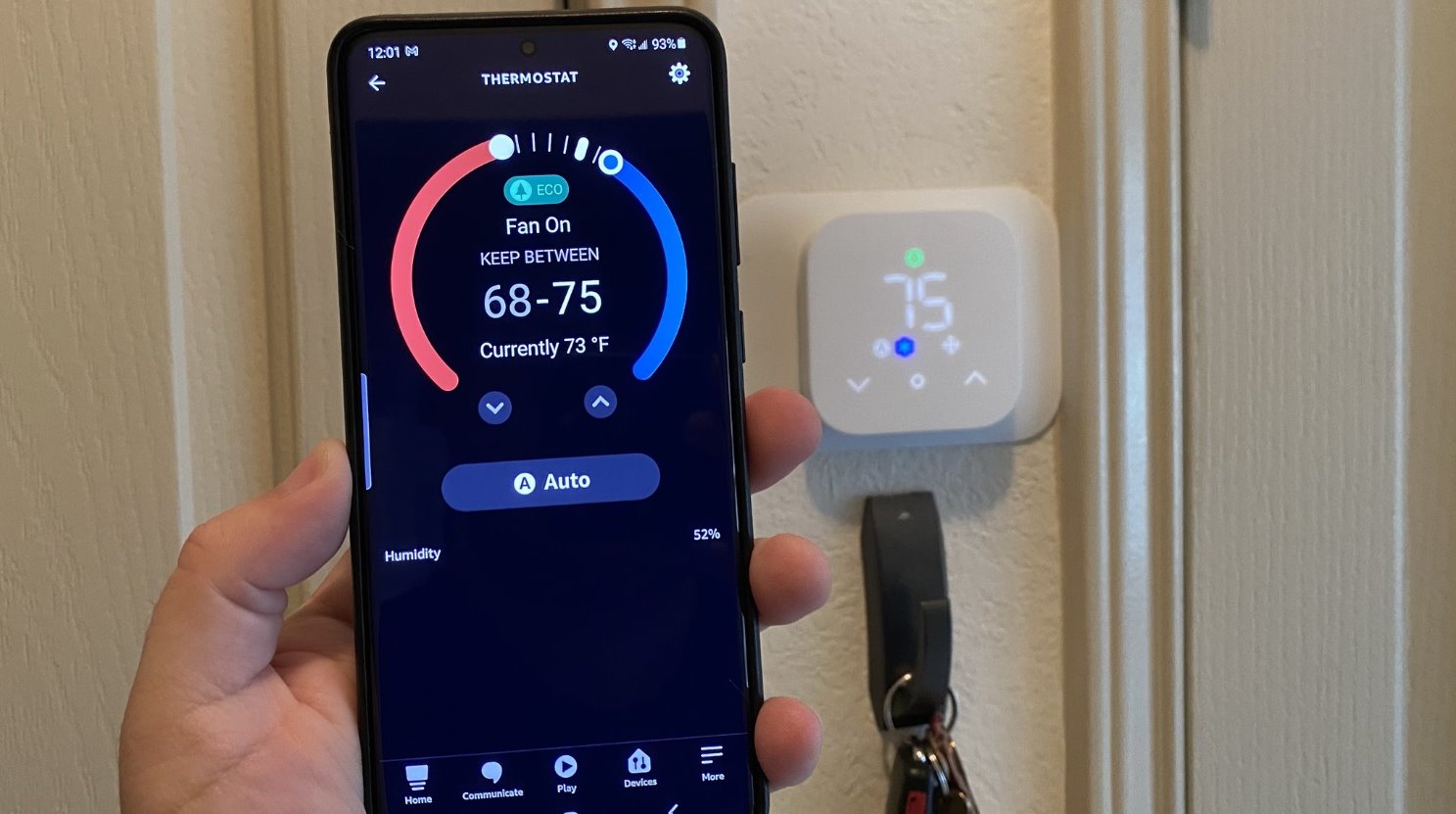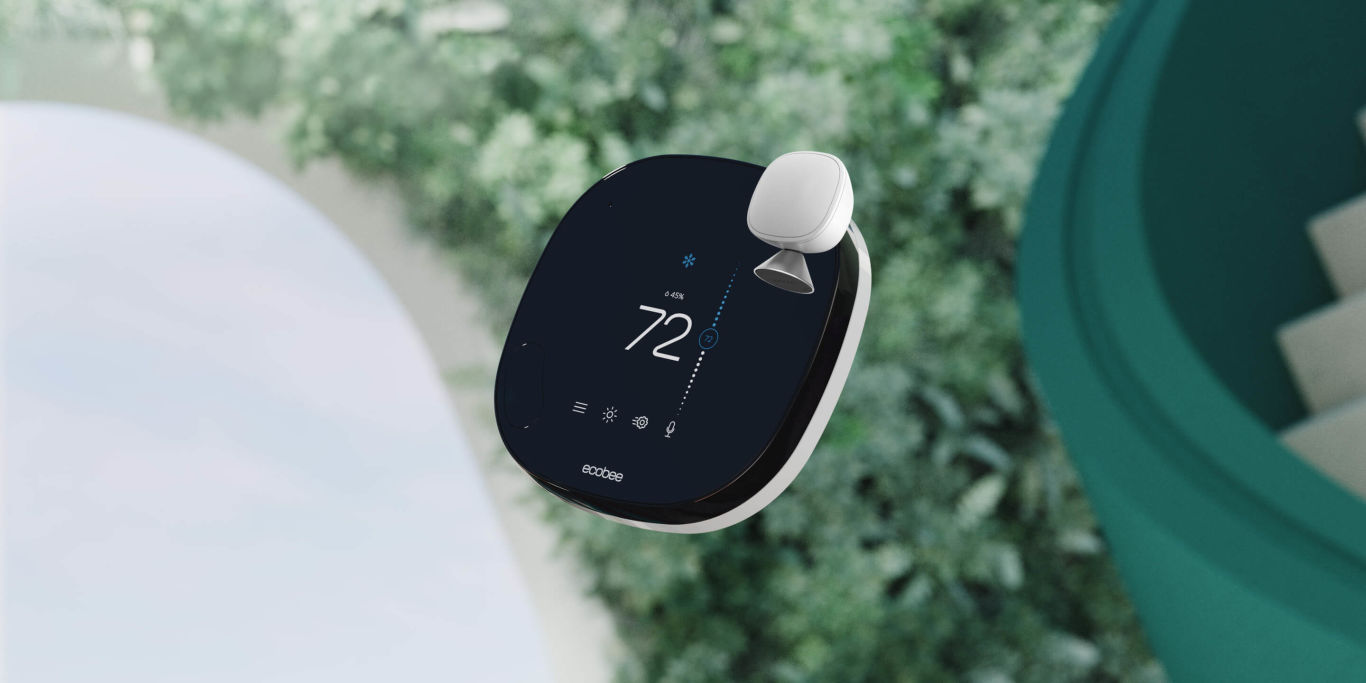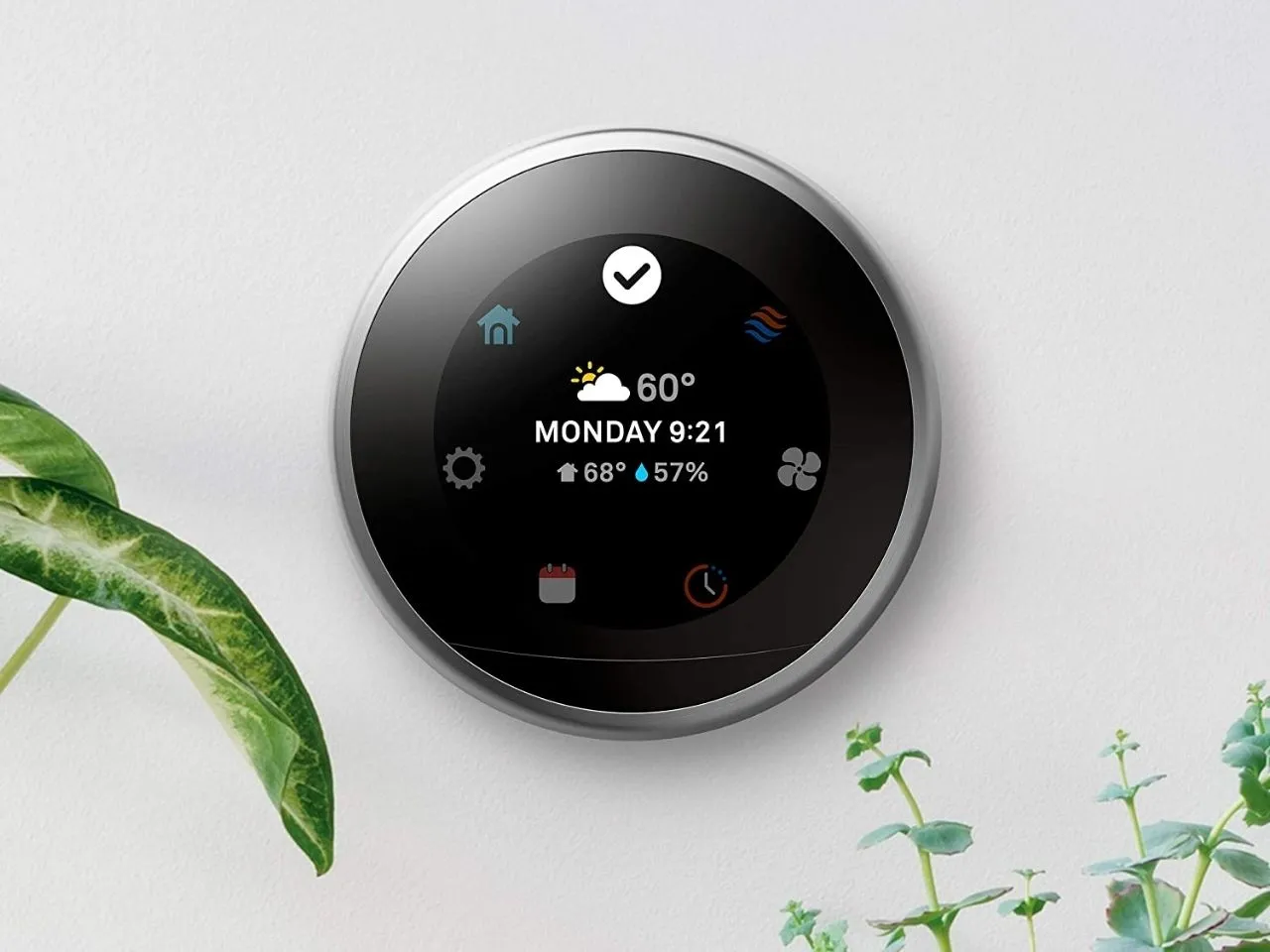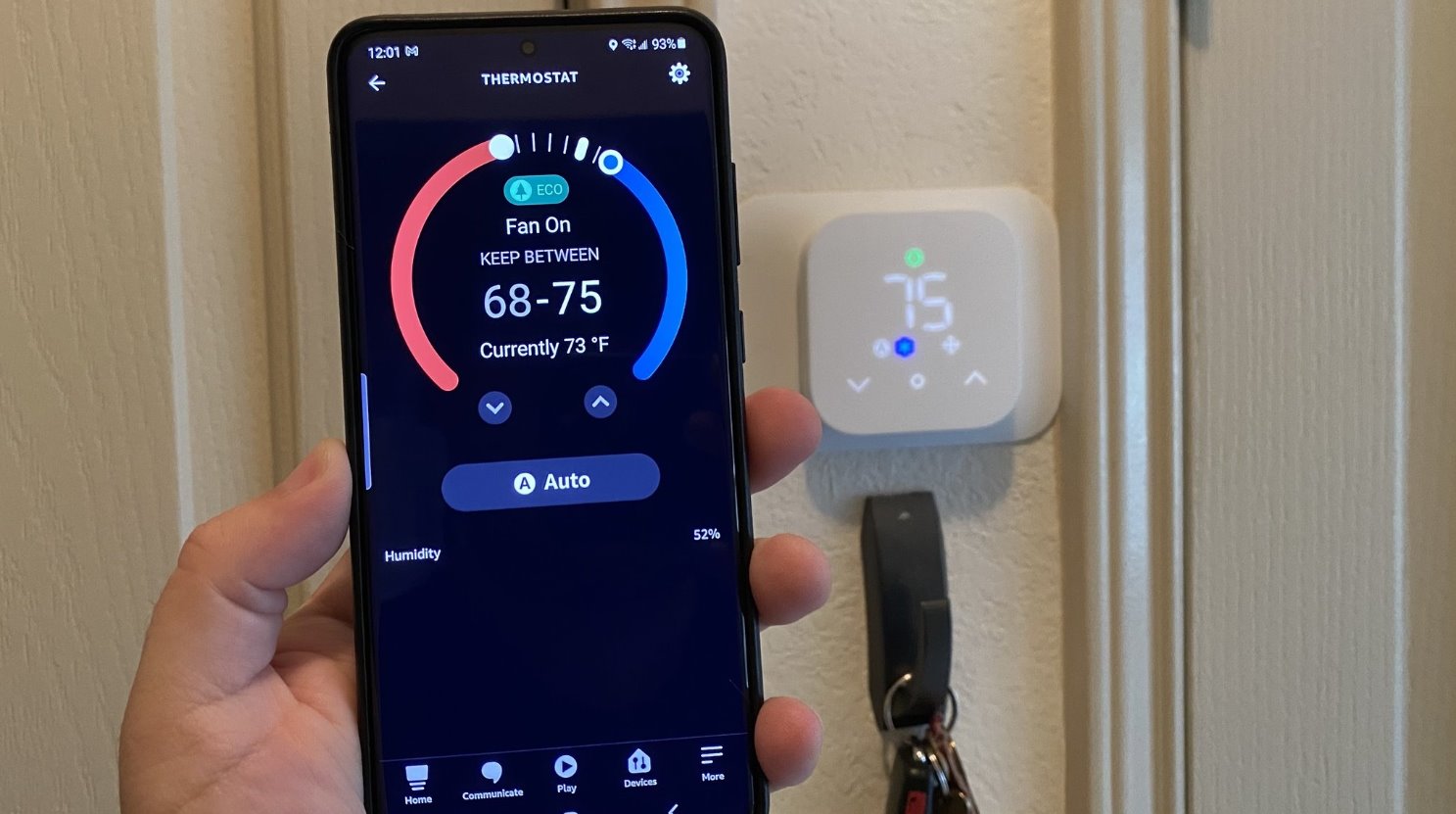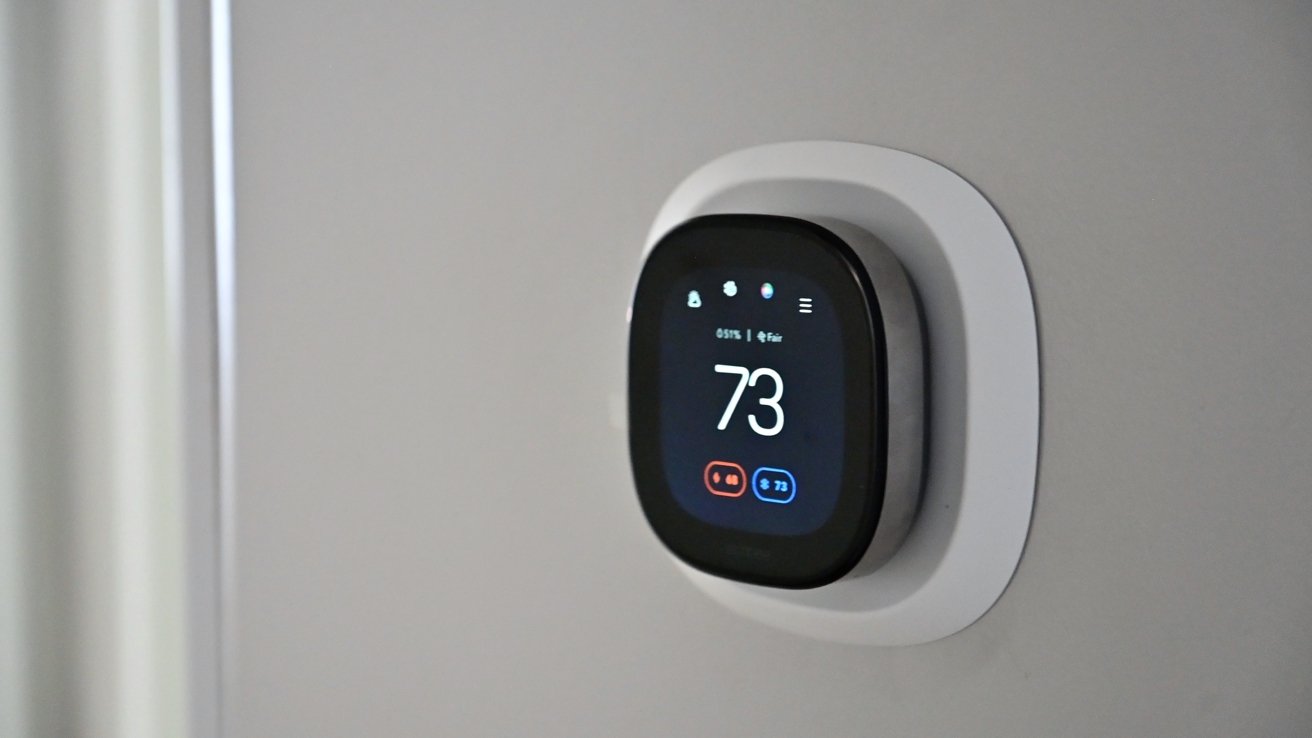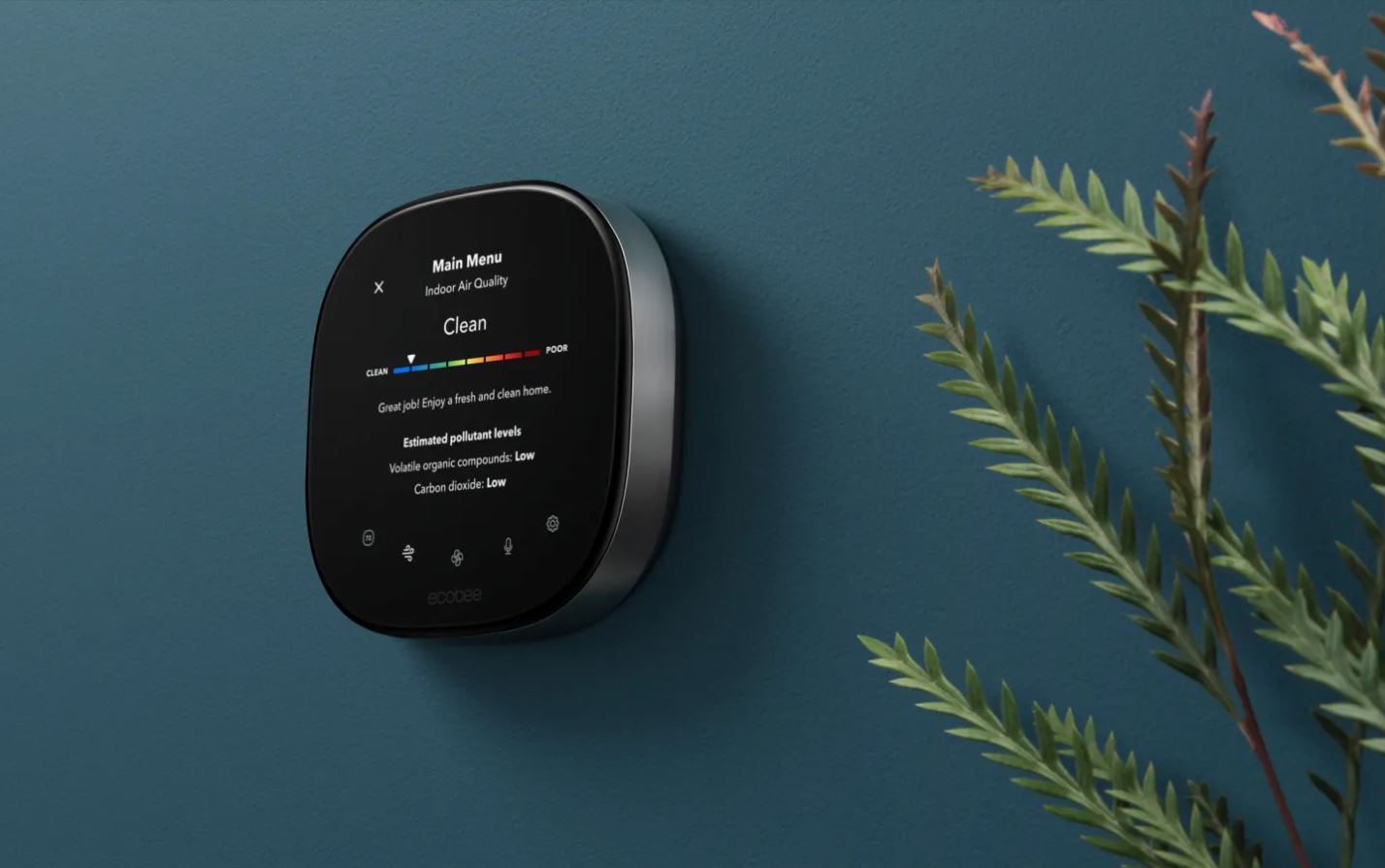Introduction
Smart thermostats have gained immense popularity in recent years due to their advanced features and ability to improve energy efficiency in homes. These intelligent devices promise convenience, energy savings, and increased control over your heating and cooling systems. Despite their numerous advantages, it is essential to consider the potential drawbacks and limitations before investing in a smart thermostat for your home.
In this article, we will explore the cons of using a smart thermostat and discuss the factors you should consider before making a purchase. Understanding these downsides will help you make an informed decision and determine if a smart thermostat is the right choice for your specific needs and circumstances.
It is crucial to keep in mind that while smart thermostats offer advanced functionalities, they may not be suitable for every household. Considering the potential drawbacks will help you assess whether the benefits outweigh the disadvantages in your particular situation.
Let’s explore the cons of a smart thermostat in more detail:
Higher upfront cost
One of the significant drawbacks of installing a smart thermostat is the higher upfront cost compared to traditional thermostats. Smart thermostats incorporate advanced technology, such as Wi-Fi connectivity, touchscreen interfaces, and compatibility with smart home systems, which contribute to their higher price tag.
While the exact cost will vary depending on the brand and model, smart thermostats typically range from $100 to $300. On the other hand, basic programmable thermostats can be purchased for as low as $20 to $50. The initial investment required for a smart thermostat may be a deterrent for those on a tight budget or those who are hesitant to spend a significant amount on a thermostat upgrade.
However, it is important to consider the potential long-term savings and energy efficiency benefits that a smart thermostat can offer. Smart thermostats are designed to learn your heating and cooling patterns, adapting to your preferences and automatically adjusting temperature settings for optimal comfort and energy efficiency. Over time, this can lead to substantial cost savings on your energy bills.
If the higher upfront cost is a concern, it is worth considering the potential return on investment and weighing it against the long-term benefits of energy savings and convenience that a smart thermostat can provide.
Compatibility with older heating systems
Another potential drawback of smart thermostats is their compatibility with older heating systems. While most smart thermostats are designed to be compatible with a wide range of HVAC systems, including conventional forced-air systems and heat pumps, there may be limitations when it comes to older or less common heating systems.
Older heating systems may not have the necessary wiring or technology to support the advanced features of a smart thermostat. Some older systems may rely on outdated control systems or lack the necessary communication protocols to connect with a smart thermostat.
Before investing in a smart thermostat, it is crucial to ensure that it is compatible with your specific heating system. This may require consulting with a professional HVAC technician or referring to the manufacturer’s compatibility guidelines. Failure to do so could result in a costly installation that does not function properly or requires significant modifications to your existing system.
In some cases, compatibility issues can be overcome with the use of additional devices or adapters. However, this may further add to the cost and complexity of the installation process.
If you have an older heating system, it is essential to thoroughly research the compatibility of smart thermostats before making a purchase. Understanding the compatibility limitations will help you avoid potential frustrations and ensure a seamless integration with your heating system.
Connection and privacy concerns
While smart thermostats offer the convenience of remote control and monitoring through smartphone apps or web portals, this connectivity raises concerns about the security and privacy of your data.
Smart thermostats rely on Wi-Fi connectivity to connect with your home network and enable remote access. This connection opens up the possibility of unauthorized access to your thermostat and potentially your entire smart home system. If not properly secured, hackers may be able to gain control over your thermostat, adjust temperature settings, and even access other connected devices within your home.
To mitigate these concerns, it is crucial to choose a reputable smart thermostat brand known for prioritizing data security. Look for devices that offer strong encryption protocols and regular firmware updates to address any vulnerabilities. Additionally, always secure your home Wi-Fi network with a strong password and enable two-factor authentication when available.
Moreover, smart thermostats collect data about your heating and cooling patterns, occupancy, and usage habits. This data is invaluable for optimizing energy efficiency and providing personalized recommendations. However, it also raises privacy concerns, as your habits and routines are being tracked and potentially shared with third parties.
Before purchasing a smart thermostat, carefully review the manufacturer’s privacy policy to understand how your data is collected, stored, and used. Look for transparency regarding data protection measures, as well as options to control and limit data sharing.
By being diligent about security measures and understanding the privacy implications of using a smart thermostat, you can enjoy the convenience without compromising your personal information or home network security.
Potential for incorrect temperature readings
One of the drawbacks of smart thermostats is the potential for inaccurate temperature readings, which can impact the overall comfort and energy efficiency of your home.
Smart thermostats often rely on built-in temperature sensors to measure the ambient temperature in the room. However, factors such as the thermostat’s placement, proximity to heat sources or drafts, and even nearby objects can affect the accuracy of these readings.
Inaccurate temperature readings can result in your HVAC system running longer than necessary, leading to energy wastage and higher utility bills. Moreover, it can cause discomfort if the thermostat fails to accurately maintain the desired temperature in your home.
To mitigate the risk of incorrect temperature readings, it is crucial to properly install and calibrate your smart thermostat. Follow the manufacturer’s instructions regarding optimal placement and ensure that it is not obstructed by furniture or other objects that may interfere with temperature sensing.
In some cases, you may need additional temperature sensors placed in different areas of your home to ensure accurate temperature measurements throughout your living space, especially in larger or multi-story homes.
Regular maintenance and calibration of your smart thermostat are also essential. Periodically check the temperature readings against a reliable thermometer placed nearby to ensure accuracy. If you notice significant discrepancies, the thermostat may require recalibration or professional assistance to recalibrate the sensors.
It is important to keep in mind that while technology has advanced significantly, smart thermostats may still have limitations in accurately measuring temperature compared to more sophisticated HVAC systems or dedicated temperature monitoring devices.
By being aware of the potential for incorrect temperature readings and taking appropriate measures to minimize inaccuracies, you can optimize the performance of your smart thermostat and ensure a comfortable and energy-efficient home environment.
Learning curve and complexity
Another factor to consider when it comes to smart thermostats is the learning curve and complexity associated with their operation and setup. While these devices offer advanced features, they can also be more complex to initially set up and understand compared to traditional thermostats.
Smart thermostats often come with a variety of features and customizable settings that can be overwhelming for some users. Learning how to navigate the thermostat’s interface, accessing different settings, and understanding how to make the most of its capabilities may require some time and patience.
Additionally, smart thermostats operate on different scheduling and programming systems compared to traditional thermostats. They often rely on algorithms and learning capabilities to adapt to your lifestyle and automatically adjust temperature settings. Understanding how to optimize these settings and effectively program your smart thermostat can take some trial and error, especially for those who are not technologically inclined.
It is important to read the manufacturer’s instructions thoroughly and take advantage of any available resources, such as online tutorials or customer support, to familiarize yourself with the features and functionality of your smart thermostat.
Furthermore, if you have multiple family members or occupants in your home, it may take some time for everyone to adjust to the new system and establish preferred temperature settings. Communication and coordination are essential to ensure that everyone’s comfort needs are met and that the smart thermostat can effectively optimize energy efficiency.
While the learning curve and complexity associated with smart thermostats can be initially challenging, it is important to remember that these devices are designed to provide long-term energy savings and convenience. With some patience and experimentation, you can harness the full potential of your smart thermostat and enjoy the benefits it offers.
Dependence on Wi-Fi and internet connectivity
One of the potential drawbacks of smart thermostats is their dependence on Wi-Fi and internet connectivity to function properly. Unlike traditional thermostats that operate independently, smart thermostats require a stable internet connection to access their full range of features and control options.
This reliance on Wi-Fi and internet connectivity introduces a level of vulnerability. A loss of internet connection or Wi-Fi outage can disrupt the functionality of your smart thermostat, rendering it temporarily unresponsive or unable to communicate with your smartphone or other connected devices.
In situations where your internet connection is unreliable or experiences frequent outages, this dependence on connectivity can be a significant drawback. Without a stable internet connection, you may not be able to adjust your thermostat remotely, receive real-time data, or utilize advanced features such as energy reports or smart home integrations.
Another consideration is the impact of power outages. While some smart thermostats come with backup batteries to maintain basic functionality during power disruptions, extended power outages can limit the ability to control your thermostat remotely or access certain features until power is restored.
Additionally, if your Wi-Fi network signal is weak or inconsistent in certain areas of your home, this may affect the reliability and responsiveness of your smart thermostat’s remote control capabilities. It is important to ensure that your Wi-Fi signal is strong and stable throughout your home to avoid any issues with connectivity.
To mitigate these concerns, it is advisable to have a backup plan in place for situations when the internet or power is unavailable. This may include keeping a traditional thermometer on hand to manually adjust the temperature or having a backup heating or cooling solution in case of extended outages.
Considering the dependence on Wi-Fi and internet connectivity, it is important to evaluate the reliability and stability of your internet connection before investing in a smart thermostat. Understanding the potential limitations will help you make an informed decision and determine if a smart thermostat aligns with your specific needs and circumstances.
Lack of personalized comfort settings for multi-zone homes
One of the limitations of smart thermostats is their potential lack of support for personalized comfort settings in multi-zone homes. While smart thermostats excel at optimizing temperature control in a single zone, they may not offer the same level of customization and control in homes with multiple heating or cooling zones.
In multi-zone homes, each zone may have different temperature requirements based on factors such as room occupancy, sunlight exposure, or individual preferences. Traditional thermostats often allow for separate temperature adjustments in each zone, ensuring personalized comfort for every area of the home.
However, some smart thermostats may not fully support multi-zone heating and cooling systems or may require additional equipment, such as zone dampers or separate smart thermostats for each zone. This can add complexity and cost to the installation process.
Additionally, coordinating temperature settings and programming for multiple zones using a smart thermostat interface can be more challenging and time-consuming compared to traditional thermostats. The lack of integrated control for multi-zone homes may mean that you need to use separate applications or devices to manage each zone individually, which can be less convenient and less streamlined.
It is essential to research and choose a smart thermostat that offers multi-zone compatibility if you have a multi-zone HVAC system. Ensure that it supports separate temperature adjustments and programming capabilities for each zone, or consider alternative solutions specifically designed for multi-zone homes.
While some smart thermostats may have limitations in supporting multi-zone homes, advancements in technology are constantly being made to address this challenge. It is worth exploring options and consulting with HVAC professionals or smart thermostat manufacturers to find solutions that offer personalized comfort control for each zone in your home.
Potential for technical glitches and malfunctions
Like any electronic device, smart thermostats are not immune to technical glitches and malfunctions. While manufacturers strive to create reliable and robust products, there is always a potential for issues to arise, impacting the functionality and performance of these devices.
Technical glitches can manifest in various ways, such as incorrect temperature readings, unresponsive touchscreens, or connectivity problems with the accompanying smartphone app or home network. These issues can disrupt the normal operation of the thermostat and make it difficult to control or monitor your heating and cooling system.
In some cases, firmware updates or software bugs can introduce new issues or temporarily affect the performance of the smart thermostat. While updates are intended to improve the device’s functionality and security, there is always a possibility of unintended consequences.
If you encounter technical glitches or malfunctions with your smart thermostat, it is advisable to contact the manufacturer’s customer support for assistance. They may be able to provide troubleshooting steps or recommend a solution, such as a firmware update or a replacement device if the issue persists.
It is important to note that technical glitches or malfunctions should not be viewed as widespread problems with smart thermostats as a whole. The majority of users experience smooth and reliable operation. However, it is essential to be aware of the potential for such issues and have a contingency plan in case of temporary malfunctions, especially during extreme weather conditions.
To minimize the risk of technical glitches, it is recommended to choose a reputable brand and model with a track record of reliability. Reading customer reviews and researching the product’s performance can provide insights into potential issues you may encounter.
Regular maintenance, such as keeping the thermostat clean and ensuring proper firmware updates, can also help prevent some technical glitches. Additionally, following the manufacturer’s instructions for installation and usage can minimize the chances of encountering issues due to user error.
Overall, while technical glitches and malfunctions are possible with smart thermostats, they are not widespread occurrences. By choosing a reliable product, staying informed about updates, and seeking timely support, you can mitigate the impact of these issues and continue to enjoy the benefits of a smart thermostat in your home.
Limited control for renters
One of the considerations for renters when it comes to smart thermostats is the limited control they may have over the installation and customization of these devices. Unlike homeowners who can make modifications to their property, renters often have restrictions in place regarding alterations to their rented space.
Installing a smart thermostat typically requires replacing the existing thermostat and potentially making changes to the electrical wiring or wall mounting. Many rental agreements prohibit such alterations without explicit permission from the landlord or property management.
If you are a renter, it is essential to check your lease agreement or consult with your landlord to determine whether you are permitted to install a smart thermostat. Even if installation is allowed, you may be required to restore the original thermostat when you move out, which can be an additional hassle and expense.
Furthermore, certain smart thermostats require access to the HVAC system or control panel, which may not be accessible or easily adjustable in apartment buildings or shared living spaces. This can limit the functionality and control you have over the smart thermostat in terms of programming and customization.
However, renters may still be able to benefit from smart thermostat features that do not require complex installation or changes to the existing HVAC system. Some smart thermostats are designed to work without requiring physical installation, allowing you to control and monitor temperature settings through smartphone apps or voice assistants.
An alternative solution for renters is to consider portable, plug-in smart thermostats that do not require any wiring or permanent installation. These devices can be plugged into a power outlet and controlled remotely, offering convenience and energy-saving benefits without violating any lease agreements.
If you are a renter interested in using a smart thermostat, it is crucial to communicate with your landlord or property management to explore the options available to you. They may have specific guidelines or alternative solutions to accommodate your desire for enhanced temperature control and energy efficiency.
Overall, while renters may have limited control over the installation and customization of smart thermostats, there are still options available to enjoy some of the benefits that these devices offer.
Conclusion
Smart thermostats offer a range of benefits, including convenience, energy savings, and enhanced control over your home’s heating and cooling systems. However, it is essential to consider the potential drawbacks and limitations before deciding to install a smart thermostat in your home.
Higher upfront costs, compatibility issues with older heating systems, and concerns about connectivity and privacy are some of the factors that may influence your decision. Additionally, there can be challenges associated with learning how to navigate and customize the features of smart thermostats, especially in multi-zone homes.
Technical glitches and malfunctions can also occur, although they are not common. Furthermore, renters may face limitations in terms of installation and customization options due to lease agreements and property restrictions.
Despite these disadvantages, technological advancements are continuously addressing many of these concerns, and the benefits of smart thermostats can often outweigh the drawbacks. Proper research, understanding compatibility and limitations, and communicating with professionals or manufacturers can help you make an informed decision and choose the right smart thermostat that suits your needs.
It is essential to weigh the potential drawbacks against the advantages that smart thermostats offer in terms of energy efficiency, convenience, and increased control over your home’s comfort. Each homeowner’s requirements and circumstances will vary, so it is crucial to choose the option that aligns with your specific needs and lifestyle.
Ultimately, by considering the cons of a smart thermostat alongside the pros, you can make a well-informed decision and ensure that your home’s temperature control system meets both your comfort preferences and energy-saving goals.







